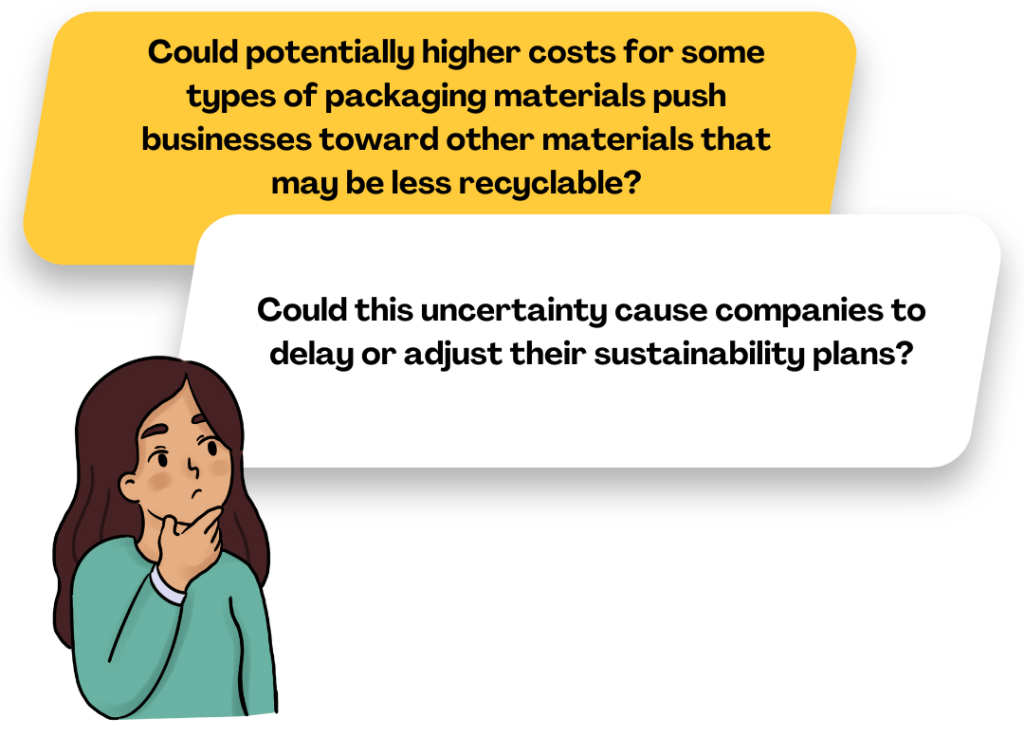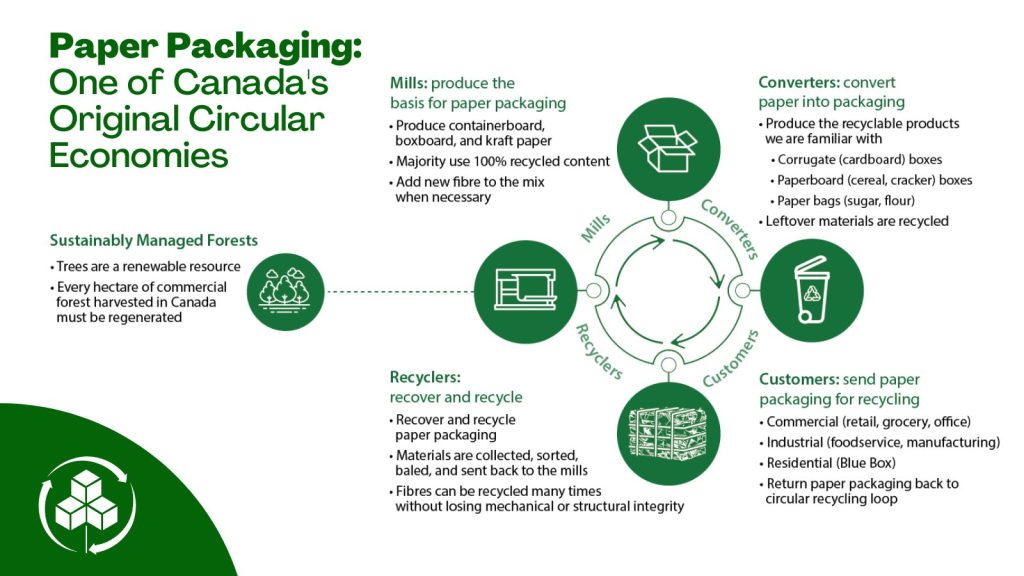As discussions continue around the United States proposed 25% tariffs on Canadian imports —including paperboard and cardboard — it’s important to consider not only the potential economic implications, but also the possible environmental implications. While these tariffs are still under review, they raise questions about how trade policy may influence packaging decisions and business sustainability planning.
In this blog, the Paper and Paperboard Packaging Environmental Council (PPEC) explores the unintended environmental consequences of tariffs. While we do not take a position on trade policy itself, we believe it is important to consider how such policies could impact sustainability efforts.
So, what could all this mean for packaging, recycling, and sustainability planning?

If tariffs were to make certain materials — such as Canadian-produced recyclable paperboard and cardboard — more expensive compared to other materials, businesses may seek alternative materials.
On a recent earnings call, Coca-Cola’s CEO James Quincey said that the beverage company could move to PET bottles for some products if aluminum cans were to become less affordable due to tariffs (on March 12, the United States started applying a 25% tariff on imports of steel and aluminum products from all countries, including Canada). It is worth noting that Quincey also said “we’re in danger of exaggerating the impact of the 25% increase in the aluminum price relative to the total system.”
And when it comes to corporate sustainability goals, there has already been a slowdown in progress on various sustainability targets, with some North American companies highlighting difficulties in sourcing sustainable feedstock and materials, and a lack of infrastructure for sorting and recycling.
At a time when policymakers and businesses are working to improve recycling systems through Extended Producer Responsibility, with particular efforts to reduce plastic, the unintended environmental impacts of tariffs should be considered. Our intention is not to exaggerate, but rather to explore potential implications from a sustainability perspective. It is possible that cost pressures could drive shifts in packaging materials, which could undermine efforts to reduce waste, particularly as they relate to Canada’s Zero Plastic Waste Agenda, the U.S. National Strategy to Prevent Plastic Pollution, and the work being done to develop an international legally binding instrument on plastic pollution.
Additionally, the potential threat of tariffs creates an uncertain business climate that may make it more difficult to plan, which could impact or even delay progress or investments in corporate waste reduction and sustainability initiatives.
While the U.S. tariffs on Canadian paperboard and cardboard remain under review, the Canadian government has also identified potential reciprocal tariffs on U.S. imports of these same products. This ongoing uncertainty adds another layer of complexity for businesses making packaging and sustainability decisions.
We have seen before how external policy decisions can have impacts on local markets. China’s National Sword Policy, implemented in 2018, reshaped global recycling by restricting imports of certain waste materials.
We recently discussed this with PPEC member company Emterra in a Q&A with their Chief Sustainability Officer. Reflecting on decades of experience in waste resource management and recycling, Paulina Leung emphasized the importance of global politics, specifically noting how the National Sword policy “opened up new markets in new countries and highlighted the need to ‘onshore’ recycling in Canada and in North America.”
While not a tariff, China’s ban on importing certain recyclables had a significant impact, affecting recycling markets, changes in packaging material choices, and the development of more local recycling solutions.
For Canada’s paper packaging industry, environmental sustainability is built right into its business model. For decades, our industry has relied on recycled content, not just because it’s good for the environment, but because it makes business sense. Using and reusing recycled fibres isn’t just an input decision, it’s a valuable resource that keeps materials in use and supports Canada’s recycling system.
Regardless of how trade policies evolve, one thing remains clear: recycling has never been more important to ensure that clean, high-quality fibres are recovered and reintegrated into Canada’s local paper packaging circular economy.

